ORP: Oxidation Reduction Potential
What is Oxidation Reduction Potential?
Oxidation Reduction Potential (ORP) is a measurement (in mV) of the tendency or the strength that indicates whether a solution is oxidizing or reducing (= deoxidizing).
Any positive number indicates that the solution is oxidizing; the higher, the more oxidizing. The same theory applies on the negative side, just in the opposite direction; the lower, the more deoxidizing. And of course, any negative number indicates a reducing or deoxidizing tendency.
What does oxidation or reduction mean to our health?
The consumption of oxidized foods and beverages tend to affect unfavorably the chemical characteristics of the body fluids. Many foods and beverages are highly oxidized and devoid of electrons.
Likewise, the addition to one’s diet of negative hydrogen ions, which are found to be especially high in organically grown vegetables, tends to affect the body fluids in a favorable manner.
Naturally, the ORP value varies quite widely between the foods and beverages. Considering you want to avoid oxidizing your body internally as much as possible, it is important to make a constant effort to eat and drink of which ORP value is on the negative side. However, unfortunately, the majority of what we eat and drink have positive ORP values, often quite high.
Many of you might be disappointed to know that some of the worst (the most oxidizing) examples include alcohol beverages, soda, meat, which ironically represent the most popular.
On the other hand, fortunately, there are certain group of foods that have negative ORP values, thus deoxidizing. Japanese Matsutake mushroom is known to have an ORP of around -400mV while miso (fermented soy beans) products ususally show it at around -100mv to -150mV.
Also, some interesting comparison can be made on the freshness of the food at different stages of the product cycle.
For example, a freshly squeezed orange juice shows an ORP of usually around -100mV while most of the packaged orange juice show as high as +200mV.
What is the typical ORP value of Kangen water then?
As "Kangen" means "reduce" or "deoxidize" in Japanese, this water is known for its impossibly low negative ORP values.
While the actual ORP varies depending on the source water, it is generally anywhere between -250mV and -500mV. Anything below -550mV is classified as Strong Kangen Water and is considered too strong for human body to take internally, and therefore not recommended for drinking.
As you can see the comparing pictures below, the ORP factor is the incomparable asset to this water. It also is the differentiating factor to its close cousin Ionized Alkaline Water, whose ORP values vary anywhere from +100mV to -150mV, again depending on the source water
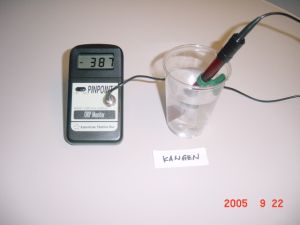
Kangen Water: -387mV (Only one that's showing a negative reading)
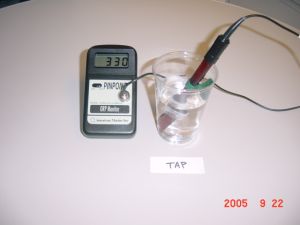
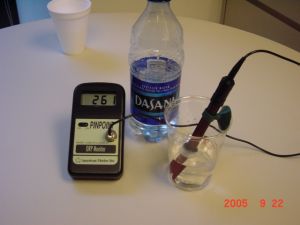
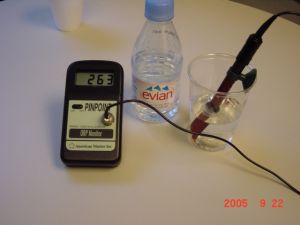
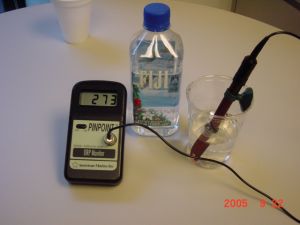
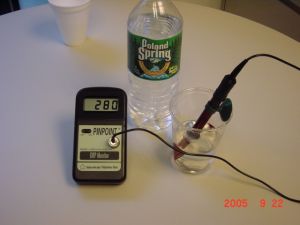
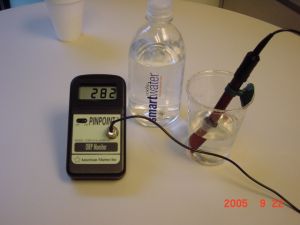
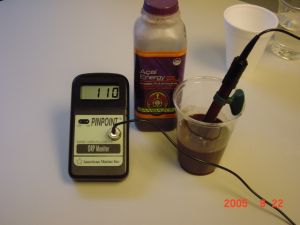
|

